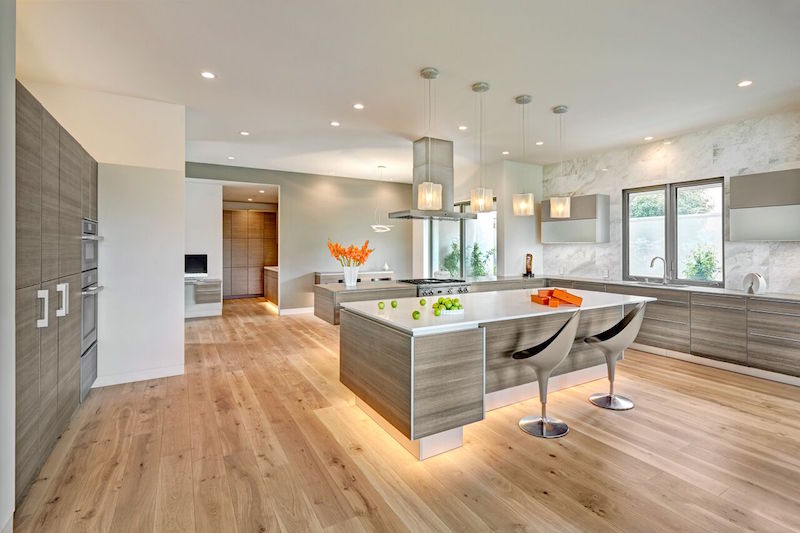The traditional kitchen has lost some of its metaphorical luster in recent years as, according to the 2017 Kitchen & Bath Design Trends Report, contemporary-styled kitchens have overtaken traditional to become the second-most popular North American kitchen design.
According to respondents, in addition to contemporary kitchens surpassing traditional kitchens, two-toned colored kitchens and kitchens equipped with more technology are also two trends currently on the rise.
Based on the survey, the NKBA created a list of the top 10 overall kitchen trends it expects to see for 2017.
- Clean lines, built-ins and simple door styles dominate kitchen designs. Contemporary- styled kitchens overtake Traditional to be the second most popular design after Transitional. Emerging: Industrial and Mid Century Modern. Mountain Modern and Coastal are variations on Contemporary.
- White and gray painted cabinets dominate kitchen color schemes and show no signs of slowing down, especially gray. Blue painted and high gloss cabinets are emerging. For overall color schemes, blue as well as black are emerging.
- Two-toned kitchens are gaining in popularity. Also mixing it up: materials and metals, across surfaces and as accents.
- While wood cabinets dominate kitchen designs, metal --currently a small segment of the cabinet market -- appears to be emerging. Metal cabinets are most frequently specified by younger and male designers.
- Furniture-look pieces, rollouts and pullouts and under cabinet lighting (LED) are among the most popular kitchen cabinet features. Use of crown molding is declining. Rustic and reclaimed woods were frequently mentioned.
- Quartz is the most popular kitchen countertop material, and trending up. Granite, the second most popular countertop material, is trending down.
- Induction cooktops and convection ovens are trending higher, and microwave drawers are outpacing freestanding or built-in microwaves. Steam ovens still represent a small segment of the market, but are also trending higher.
- Use of technology in the kitchen is increasing. About one third of NKBA professionals included wiring and pathways for future tech integration. Also trending upwards: more Internet connected appliances and docking stations.
- Interior barn and pocket doors in kitchens are trending up.
- Accessible and/or universal design features continue to trend up for kitchens.
The report and subsequent trends were generated with information from 562 responses to the 2017 Kitchen & Bath Design Trends survey that was sent out to National Kitchen and Bath Association (NKBA) members in August 2016.
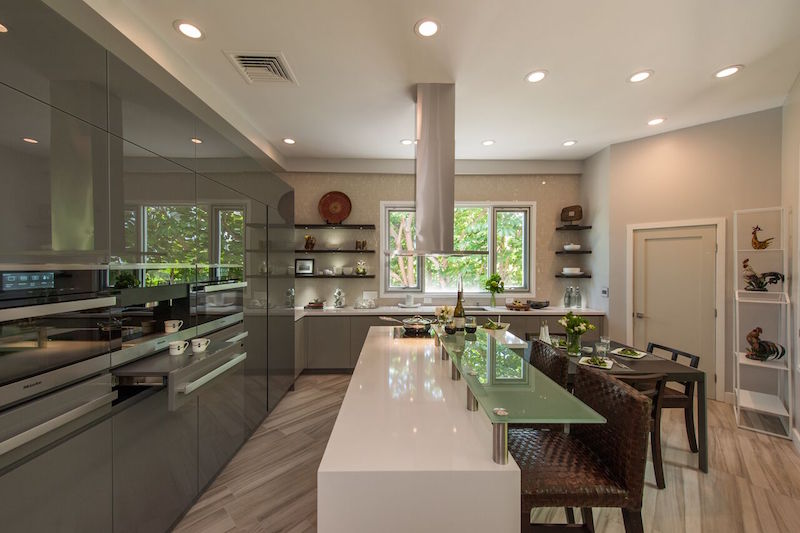 Designer: Dedra Hinano Nahinu, CKD, Inspiration Interiors. Photo: Augie Salbosa.
Designer: Dedra Hinano Nahinu, CKD, Inspiration Interiors. Photo: Augie Salbosa.
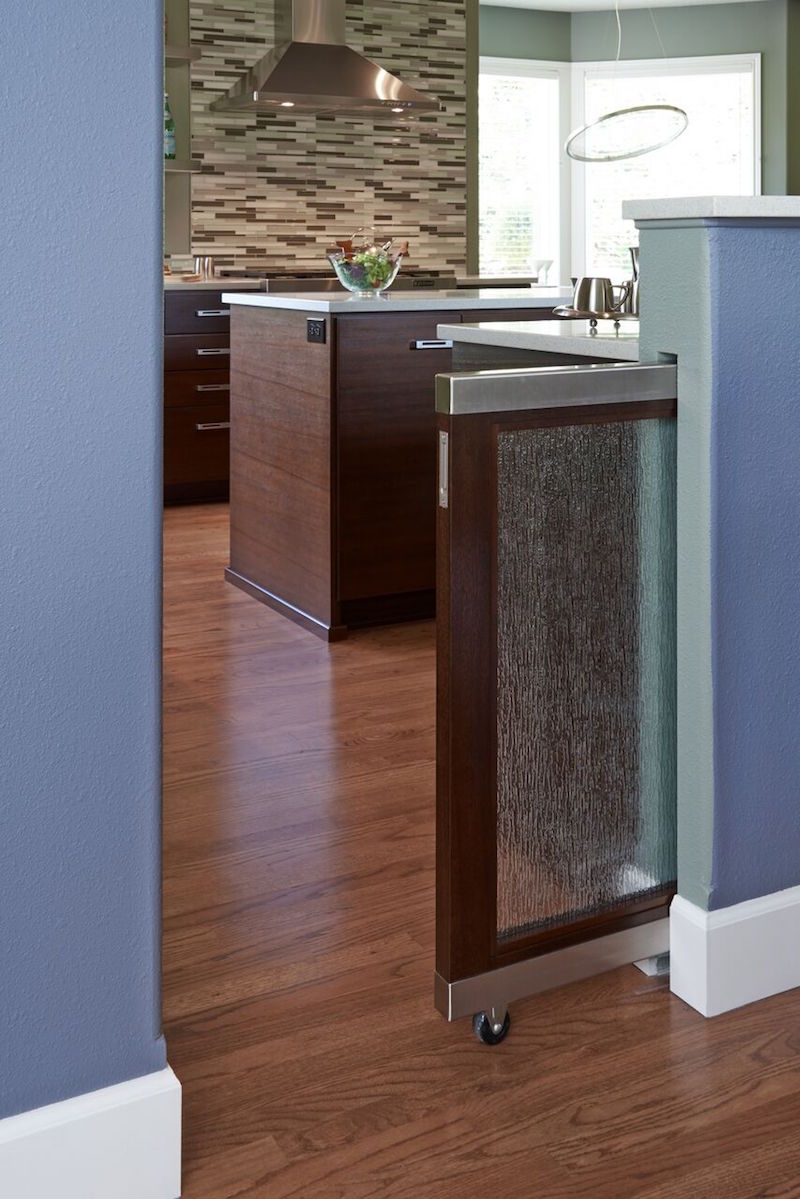 Designer: Robin R. Fisher, CMKBD, CAPS, Robin Rigby Fisher Design. Photo: Dale Lang.
Designer: Robin R. Fisher, CMKBD, CAPS, Robin Rigby Fisher Design. Photo: Dale Lang.
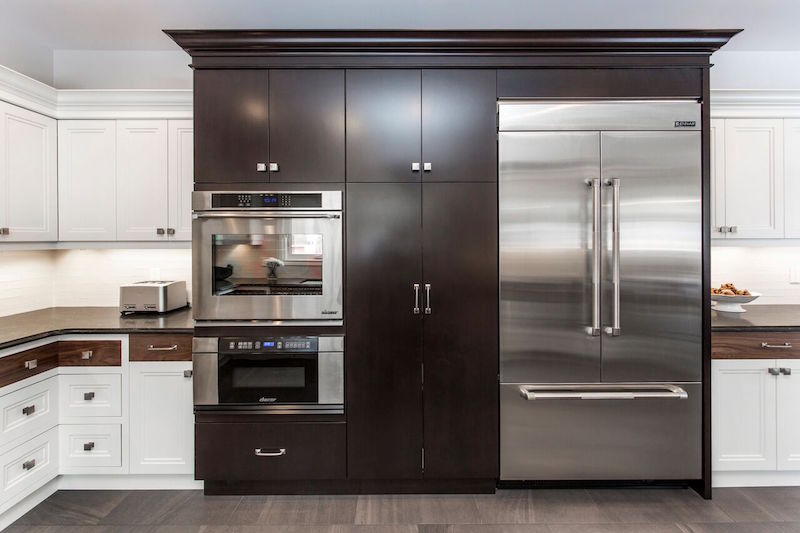 Designer: Cassandra Nordell-MacLean, William Standen Co. Photo: Gerald Mabee.
Designer: Cassandra Nordell-MacLean, William Standen Co. Photo: Gerald Mabee.
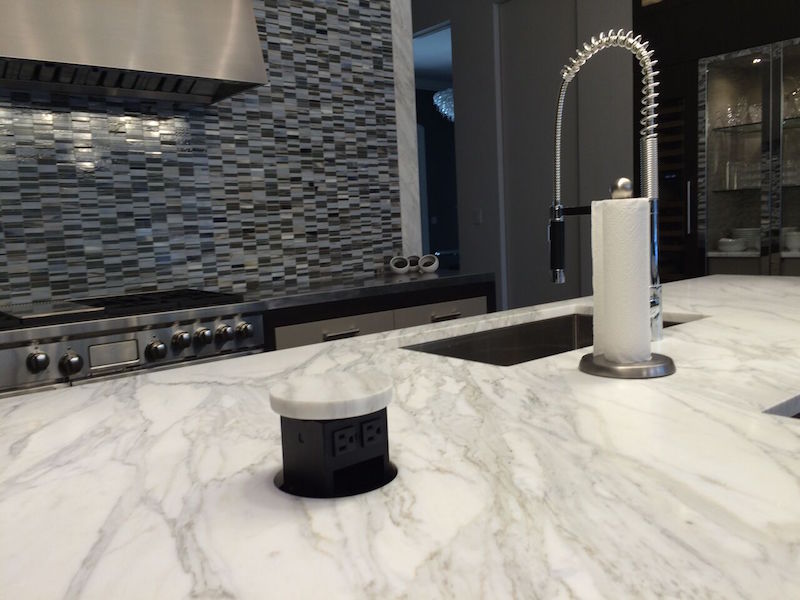 Designer: Leslie Lamarre, CKD, CID, TRG Architecture + Interior Design. Photo: Bernard Andre.
Designer: Leslie Lamarre, CKD, CID, TRG Architecture + Interior Design. Photo: Bernard Andre.
Related Stories
| May 19, 2014
Why e-commerce won't kill 'bricks and mortar' retail sector
Despite emerging structural challenges and newly-announced store closings, such as those of Radio Shack and Office Depot, the U.S. retail sector has continued on its solid recovery.
| May 16, 2014
BoA, USGBC to offer $25,000 grants for green affordable housing projects
The Affordable Green Neighborhoods Grant Program will offer 14 grants to developers of affordable housing in North America who are committed to building sustainable communities through the LEED for Neighborhood Development program.
| May 16, 2014
Toyo Ito leads petition to scrap Zaha Hadid's 2020 Olympic Stadium project
Ito and other Japanese architects cite excessive costs, massive size, and the project's potentially negative impact on surrounding public spaces as reasons for nixing Hadid's plan.
| May 15, 2014
Paints, coatings, and sealants: 10 new ways to seal the deal
Color-shifting finishes, dry-erase surfaces, and stain-blocking paints are highlighted in this round up of new offerings in paints, coatings, sealants, and finishes.
| May 15, 2014
Biking to work up by 60 percent, according to Census Bureau report
Many U.S. cities are seeing an increase in bicycle commuters, according to new a U.S. Census Bureau report. While bicyclists still account for just 0.6% of all commuters, some of the nation's largest cities have more than doubled their rates since 2000.
| May 15, 2014
'Virtually indestructible': Utah architect applies thin-shell dome concept for safer schools
At $94 a square foot and "virtually indestructible," some school districts in Utah are opting to build concrete dome schools in lieu of traditional structures.
| May 15, 2014
First look: 9/11 Memorial Museum opens to first-responders, survivors, 9/11 families [slideshow]
The 110,000-sf museum is filled with monumental artifacts from the tragedy and exhibits that honor the lives of every victim of the 2001 and 1993 attacks.
| May 14, 2014
Construction growth looking up: Gilbane Spring 2014 Economic Report
Construction spending for 2014 should finish 6.6% higher than in 2013, with nonresidential work contributing substantially.
| May 14, 2014
Prefab payback: Mortenson quantifies cost and schedule savings from prefabrication techniques
Value-based cost-benefit analysis of prefab approaches on the firm's 360-bed Exempla Saint Joseph Heritage Project shows significant savings for the Building Team.
| May 13, 2014
First look: Nadel's $1.5 billion Dalian, China, Sports Center
In addition to five major sports venues, the Dalian Sports Center includes a 30-story, 440-room, 5-star Kempinski full-service hotel and conference center and a 40,500-square-meter athletes’ training facility and office building.


